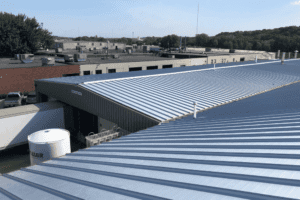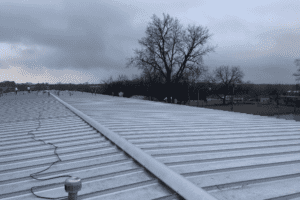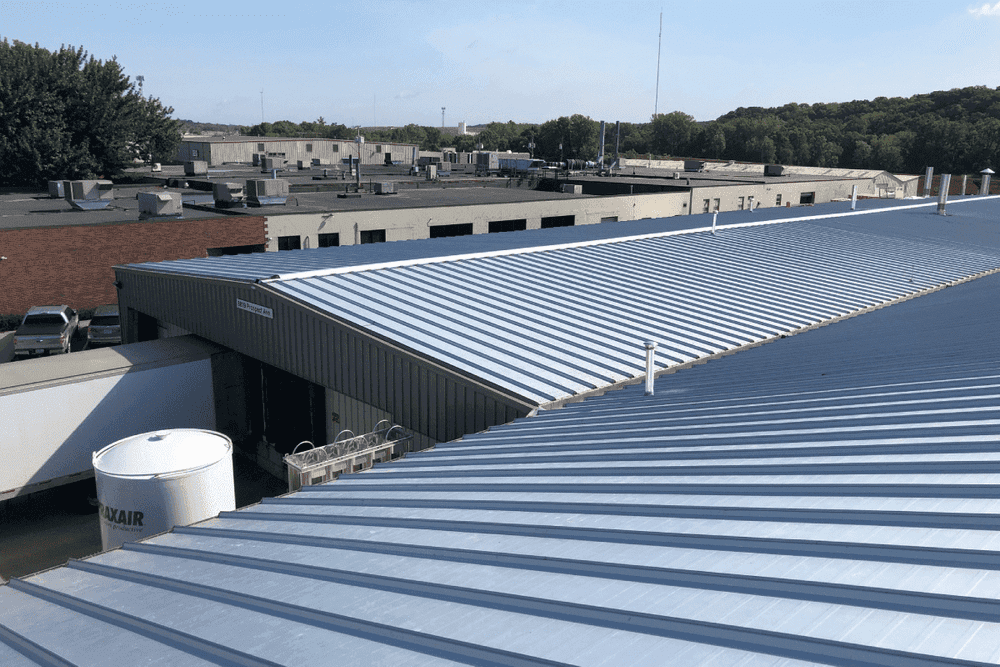
Safety First
When performing maintenance on your roof, safety should always be your top priority. OSHA requires fall protection and other safety measures to protect personnel. State and local regulations may also apply. Failure to adhere to these regulations can result in serious injury or even death, as well as substantial fines.
Key safety precautions include:
– Always use fall protection, especially near edges or eaves.
– Avoid walking on Lite*Pans and wet roof panels.
– Never walk, step, or sit on skylights or ridge caps.
– Do not walk in gutters.
– Guard all skylights and other roof openings.
For more safety information, contact your local OSHA office.
Regular Roof Inspections
Regular inspections are vital for maintaining your Butler roof. Conduct inspections at least twice a year, typically in spring and fall. Additionally, inspect the roof after severe weather events, repairs, or heavy foot traffic. Each spring, Butler Manufacturing will mail a copy of the “Annual Roof Inspection Report and Certification” form to owners with Weathertight Gold™ Endorsement Program coverage. Return this form within 60 days to keep your warranty valid.
During inspections, look for:
– Debris on the roof, curbs, gutters, downspouts, and collector boxes.
– Damage from heavy storms or unusual weather conditions.
– Resealing needs at joints in ancillary flashings and roof penetrations.
– Punctures or loose fasteners, particularly in damaged areas.
After any maintenance or inspection, remove all debris immediately. Sharp metal scraps can damage the roof coating and should be removed to prevent scratching.
Roof Maintenance Do’s and Don’ts
Do:
– Inspect your roof regularly.
– Follow maintenance procedures.
– Keep the roof and components free of debris.
– Inspect and reseal joints and roof penetrations as needed.
– Caution workers on the roof to prevent punctures.
– Clean up thoroughly after any rooftop maintenance.
– Check air conditioning units for proper condensate disposal.
– Remove excessive snow and ice as necessary.
– Repaint surfaces susceptible to rust.
– Always walk on flat parts of roof panels near supporting structures.
– Request approval from Butler before making modifications.
– Use only approved Butler Roofing Specialists for modifications.
Don’t:
– Walk on high corrugation roof panels, ridge caps, light panels, skylights, or gutters.
– Allow condensation lines or runoff from rusty areas to drain onto roof panels.
– Use wood blocking on the roof unless laid in approved mastic.
– Add load to structural components without consulting Butler.
– Use dissimilar materials on the roof.
– Allow mortar or concrete to dry on the roof.
– Walk near the edge of the roof without proper fall protection.
– Use metal shovels or other objects that can damage panel surfaces.

MR-24 Roof
Detailed Roof Maintenance
Butler roof systems are designed to withstand severe weather conditions, providing years of protection at minimal maintenance cost. However, no roof is maintenance-free. A comprehensive maintenance program is as important as the proper installation of your Butler roof system. Failure to maintain the roof can void warranties and shorten its lifespan.
Regular Roof Inspections and Debris Cleanup
Inspect your Butler roof at least semi-annually and after severe weather conditions. Look for ponded water, debris, and damage that could allow moisture infiltration. Examine roof panels for punctures or loose fasteners. Also, inspect the roof after any rooftop work or heavy foot traffic.
Key Inspection Times:
– After severe weather conditions like strong winds, hail, or heavy rain.
– Following rooftop equipment repairs or work by other trades.
– After excessive foot traffic.
Cleanup:
– Remove all debris, such as drill chips, wire, metal scrap, and insulation.
– Prevent metal scraps from scratching the roof coating by removing them immediately.
Touch-Up Painting
Occasional touch-up painting can maintain the aesthetic and protective properties of your Butler roof. Use a 5% solution of commercial detergents or specific solvents like denatured alcohol or mineral spirits for cleaning. Apply Butler-Cote FP Air Dry Enamel using a small brush or toothpick to the damaged area, keeping the coated area to a minimum.
Cleaning Solutions:
– Detergent Solutions: A 5% solution of common detergents is safe for Butler-Cote 500FP.
– Solvents: Use denatured alcohol, isopropyl alcohol, methanol, VM&P naphtha, or mineral spirits with caution.
Application:
– Clean the scratch or abrasion with a soft rag saturated with VM&P naphtha or mineral spirits.
– Wipe dry with a clean cloth.
– Apply Butler-Cote FP Air Dry Enamel unreduced to the damaged area using a small brush or toothpick.
Safety Precautions:
– Protect eyes, face, and hands.
– Ensure good ventilation in the work area.
– Use approved breathing apparatus during application.
– Keep flammable materials away and enforce no smoking.
Butler-Specific Maintenance Tips
Butler-Cote FP Air Dry Enamel:
– Formulated for use with Butler-Cote 500FP panel systems, this enamel offers superior weathering properties for a fluorocarbon air-dry system. Field application techniques may not match the factory-applied and baked Butler-Cote 500FP system, so avoid excessive touch-ups to prevent a spotted appearance over time.
Sealants and Finishes:
– Inspect and reseal joints and penetrations as necessary to maintain the integrity of your roof’s sealants and finishes. This helps prevent moisture infiltration and extends the roof’s lifespan.
Wrapping Up
Maintaining your Butler Building roof is an ongoing process that requires regular inspections, proper cleaning, and adherence to safety protocols. By following the guidelines in this guide, you can ensure the longevity and performance of your roof, protecting your investment for years to come. For any questions or further assistance, shoot us an email

